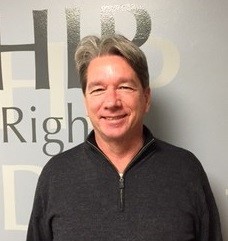 Earl Morriss, PLS, is the Survey Manager in our Federal Way office. He also happens to have a law degree! Later this month, Earl will be speaking twice at the Professional Land Surveyors of Oregon (PLSO) conference, focusing on the statutory and case law related to surveyor liability and legal descriptions.
Earl Morriss, PLS, is the Survey Manager in our Federal Way office. He also happens to have a law degree! Later this month, Earl will be speaking twice at the Professional Land Surveyors of Oregon (PLSO) conference, focusing on the statutory and case law related to surveyor liability and legal descriptions.
We recently asked Earl a few questions about the land surveying profession. As you’ll see, he is passionate and extremely articulate about the “art” of land surveying!
What drew you to land surveying as a career?
I come from an engineering family - which also includes some land surveying....my father was a civil engineer - and received a land surveying license in Georgia when he graduated from Georgia Tech. I started surveying with my father when I was about 5 - and worked as a surveyor for his engineering company while I was in college. My grandfather - father's father - was also a surveyor as part of his job as a city manager in south Georgia - so, my father surveyed with his father as I surveyed with mine. After college I just took a job doing something I knew how to do - surveying.
One of your topics is statutory law related to legal descriptions. What interests you about that topic?
Legal descriptions are the backbone of boundary surveys - a surveyor is tasked with finding the description on the ground. It is quite the art and science to interpret descriptions. The general rule is that a legal description is valid if a land surveyor can find it on the ground. And if it isn't a valid legal description - then the conveyance it is in is most likely void. Legal descriptions are like a mystery novel - everyone is a suspect and you have to figure out who's the killer.
What are the most interesting and most challenging parts of preparing/reviewing legal descriptions?
Oddly enough, we seldom actually write interesting legal descriptions today - mainly we do complex metes and bounds description that we copied off of an AutoCAD screen. For the modern descriptions we just have to be careful to get all the numbers right. It is the older descriptions that cause all the "fun"...they overlap, they leave gaps, they can be interpreted to mean a dozen different things. What does "North" really mean in a description? True north, magnetic north, north being perpendicular to some other line....and on and on.
What is your favorite thing about land surveying?
My favorite thing about land surveying is that it is a profession where we follow in the footsteps of the surveyors who came before us...our job is often to recreate the measurements of a surveyor who was in the wilderness with a chain and a transit. And to do that, all the technology in the world isn't going to give you the right answer...you have to accept that we live in an imperfect world where the most beautiful art isn't created by a machine, but by a person.
